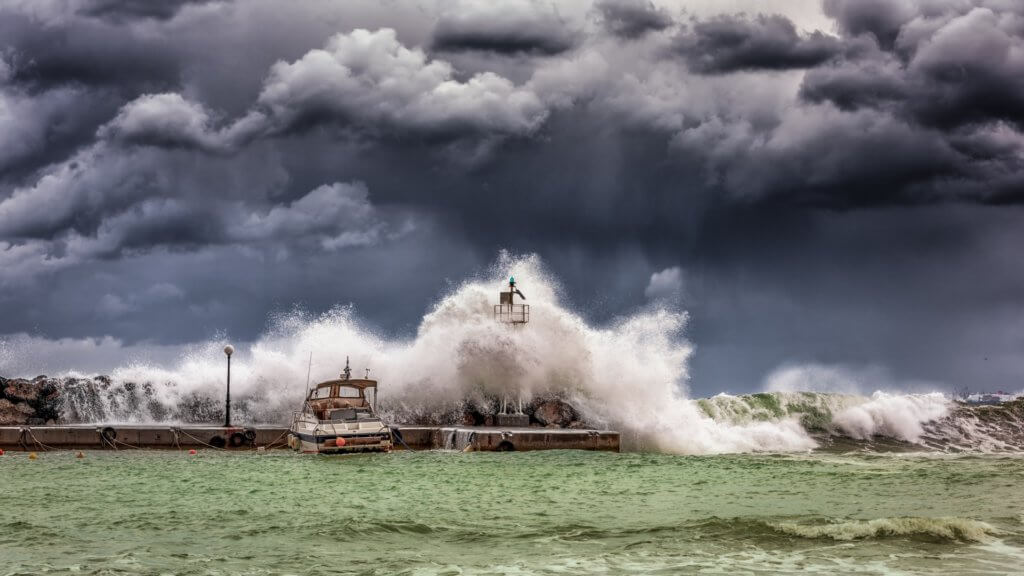SANTA BARBARA, Calif. — The vast Pacific Ocean, which covers more than 32 percent of the Earth’s surface, more than all the landmass combined, has a profound effect on global climate patterns. Periodic shifts in the ocean’s water temperature and wind patterns, known as the El Niño–Southern Oscillation, play a crucial role in global meteorology. Although scientists are certain that human activities influence this oscillation, the exact impact remains under investigation.
A recent study from the University of California-Santa Barbara has disclosed unexpected changes in the “Pacific Walker Circulation” — the atmospheric component of this system — over the industrial age. The research also identifies volcanic eruptions as a temporary disruptor of this circulation, triggering El Niño conditions.
“The question is, ‘How does the background circulation change?” says study co-author Samantha Stevenson, an associate professor at UC Santa Barbara’s Bren School of Environmental Science & Management, in a media release. “We care about the Walker Circulation because it affects weather around the world.”
This circulation arises due to Earth’s rotation, causing warm water to accumulate on the ocean basin’s western side, particularly in the Pacific. This results in increased humidity in Asia and low-altitude winds blowing westward across the sea. The Walker Circulation, an atmospheric cycle induced by these conditions, has far-reaching effects on weather patterns across the tropical Pacific and beyond.
“The tropical Pacific has an outsized influence on global climate,” says study co-author Sloan Coats, assistant professor of earth sciences at the University of Hawai‘i at Mānoa School of Ocean and Earth Science and Technology. “Understanding how it responds to volcanic eruptions, anthropogenic aerosols and greenhouse gas emissions is fundamental to confidently predicting climate variability.”
To gain a comprehensive understanding, researchers examined biological and geological records from the past 800 years, drawing data from sources like ice cores, tree rings, and coral.
“They aren’t thermometers, but they contain information about the climate,” explains Stevenson.

One of the key aspects of their research involved analyzing isotopes, variations of an element, present in various natural structures. This helped them trace the historical shifts in the Walker Circulation and understand the changes before and after greenhouse gas concentrations surged.
“We set out to determine whether greenhouse gases had affected the Pacific Walker Circulation,” notes study lead author Georgy Falster, a research fellow at the Australian National University and the ARC Centre of Excellence for Climate Extremes. “We found that the overall strength hasn’t changed yet, but instead, the year-to-year behavior is different.”
Scientists also uncovered a startling consistency in the circulation’s strength.
“That was one surprising result,” says Stevenson, “because by the end of the 21st century, most climate models suggest that the Walker Circulation will weaken.”
Volcanic eruptions emerged as another influential factor.
“Following a volcanic eruption, we see a very consistent weakening of the Pacific Walker Circulation,” says study co-author Bronwen Konecky, an assistant professor at Washington University in St. Louis.
This results in El Niño-like conditions. Understanding these climatic systems’ responses to climate change is vital for future predictions and preparedness.
“If we don’t know what happened in the real world, then we don’t know if the models that we’re using to project future changes, […] impacts and risks are giving us the right picture,” says Stevenson.
Scientists are now delving deeper, striving to determine the root causes of the changes they observed in the Walker Circulation. Using isotope ratios in their models, they hope to test various hypotheses, refining our understanding of this crucial system.
The study is published in the journal Nature.

